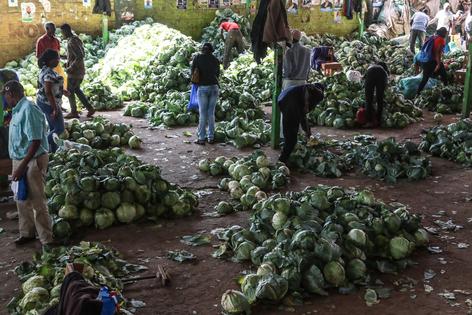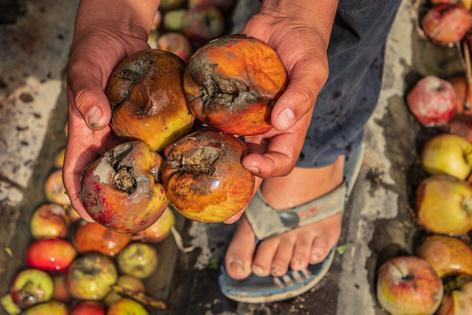Installing solar-powered refrigerators in developing countries is an effective way to reduce hunger and slow climate change
Published in Science & Technology News
Food loss and waste are major problems around the world. When food is tossed aside or allowed to spoil, it makes economies less productive and leaves people hungry.
It also harms Earth’s climate by generating methane, a potent greenhouse gas. Food loss and waste accounts for 4% of global greenhouse gas emissions. If food waste were a country, it would be the third-largest emitter in the world, ahead of India and behind only China and the U.S.
Worldwide, 1.3 billion tons of food are lost or wasted every year. Earth’s population is projected to increase from 8 billion today to roughly 10 billion by 2050. Feeding that many people will require nations to increase agricultural production by more than 70% and reduce food loss and waste.
Expanding food cold chains to the world’s least-developed countries can have enormous impacts. But it also raises concerns if it’s not done in a way that avoids contributing to climate change.
Existing refrigeration systems release hydrochlorofluorocarbons, or HCFCs, and hydrofluorocarbons, or HFCs, which are extremely potent greenhouse gases. Producing electricity with fossil fuels to power these systems also worsens climate change. For these reasons, exporting traditional cold chains to developing countries is not environmentally and socially sustainable.
Instead, developing countries need cold chains that run on renewable energy and use alternative refrigerants with lower climate impacts. As a scholar focusing on sustainable development, green growth and climate change, I believe that expanding cold chains in the developing world – particularly sub-Saharan Africa – will not only benefit the environment but also provide important social benefits, such as empowering women.
To understand why cold chains are so important, think about how food travels from the farm to your table. First it is harvested and shipped to a wholesaler. Then it might go straight to retail stores, or to a food processing company to be cooked, frozen or canned. At each stage it may sit for periods lasting hours to days. If it is not held at a safe temperature, the food may spoil or become contaminated with bacteria that cause foodborne illnesses.
In 2021, over 700 million people were hungry around the world – 425 million in Asia, 278 million in Africa and 57 million in the Caribbean and Latin America. Many countries in these regions have minimal cold storage capacity to keep food from spoiling before it can be eaten.
Seafood, meat, milk and vegetables are highly reliant on cold food chains. Countries mainly in the developing world lose 23% of their perishable products before they reach markets.
Loss of cereal crops, which also benefit from cold storage, are equally staggering. For instance, Ethiopia loses about one-third of its stored corn after five weeks due to lack of proper storage. In 2019, India’s Ministry of Food Processing Industries estimated that the country had lost or wasted 56 million tons of food, worth about US$10 billion, mainly due to lack of cold storage.
...continued











Comments